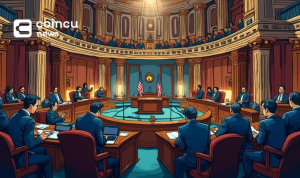Zero-Knowledge Proofs (ZKPs) are an authentication method that ensures the security of private chats and transactions on the blockchain without the need to share passwords. By utilizing ZKPs, information can be verified without being revealed to unauthorized parties. This has the potential to revolutionize the acquisition, utilization, and trading of data.
A blockchain is a collection of records managed by multiple distributed parties, each having a copy of the list. However, blockchains lack privacy and anonymity as all participants can observe all transactions. This lack of privacy can be a concern when dealing with sensitive information or confidential transactions.
Zero-knowledge proofs address this issue by allowing private transactions to be posted on the blockchain while maintaining their confidentiality. They provide a way to confirm the successful completion of a transaction without disclosing the sensitive information involved.
In essence, ZKPs enable one party to demonstrate their knowledge of a specific value without revealing any additional information. This solves the fundamental problem of security and privacy in the blockchain realm. Many multinational companies adopt ZKPs to protect their confidentiality and facilitate secure transactions on the blockchain network.
Let’s take a closer look at how ZKPs work. There are two primary types of zero-knowledge proofs: interactive and non-interactive.
What are Interactive Zero-Knowledge Proofs?
Interactive ZKPs require the prover to perform a series of actions to convince the verifier of their knowledge. These actions often involve mathematical principles of probability. The prover and verifier engage in a back-and-forth interaction to establish trust.
For example, imagine a scenario where Alice wants to prove to Bob that she knows the password to a certain account without actually revealing the password. In an interactive ZKP, Alice and Bob would engage in a series of communication rounds where Alice demonstrates her knowledge of the password using a series of encrypted messages. Bob can verify the authenticity of Alice’s claim without learning the actual password.
What are Non-Interactive Zero-Knowledge Proofs?
Non-interactive ZKPs, on the other hand, do not require interaction between the prover and the verifier. Instead, the prover can generate a proof that can be verified at a later stage without the need for additional communication.
For example, consider a scenario where a user wants to prove ownership of a certain asset on the blockchain without revealing their identity. In a non-interactive ZKP, the user can generate a proof that can be verified by anyone without the need for further interaction. This allows for greater efficiency and scalability in certain use cases.
By integrating ZKPs with blockchain technology, users can securely communicate complex documents or conduct confidential transactions. One unique feature of ZKPs is the ability to encrypt data in chunks, granting access to specific blocks and their contents to selected users while restricting others.
Several real-world applications have embraced ZKPs. Z-Cash, a cryptocurrency, utilizes ZKPs to enable confidential transactions. With ZKPs, users can transact privately without revealing the transaction details to other participants on the blockchain network.
Another example is the AdEx Network, which uses decentralized ZKP ad auctions. This allows users to bid on ad display costs without revealing the amount to other participants. ZKPs ensure transparency and fairness in the auction process while maintaining privacy.
In conclusion, Zero-Knowledge Proofs (ZKPs) provide a powerful solution to the privacy and security concerns on the blockchain. By allowing private transactions to be verified without revealing sensitive information, ZKPs enable confidential and secure interactions. The integration of ZKPs with blockchain technology opens up new possibilities for data privacy, confidential transactions, and secure communication.















